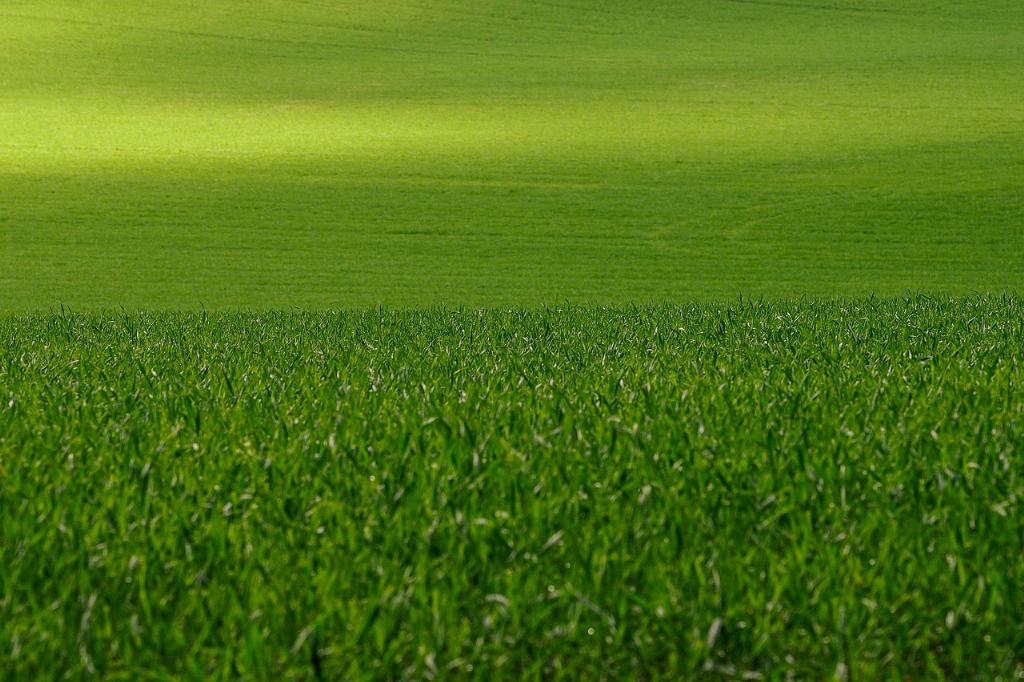When it comes to seeding your lawn in the fall, timing is key for optimal growth and success. As mentioned above, the ideal window for fall lawn seeding is typically from mid-August through mid-September. During this period, the temperatures are usually cooler, and the soil is still warm enough to promote seed germination.
Challenges of Seeding Too Early
If you seed your lawn too early in the fall, you may encounter challenges due to the lingering heat of late summer. High temperatures can cause the soil to dry out quickly, making it harder for seeds to establish and grow. It’s essential to wait until the temperatures have cooled down a bit to ensure the best conditions for seed germination.
Risks of Seeding Too Late
On the other hand, seeding your lawn too late in the fall can also pose risks to the success of your lawn establishment. As the season progresses, colder air temperatures may set in, potentially exposing your seedlings to frost or freezing temperatures. This can stunt growth or even kill off newly germinated seeds, setting back your lawn’s progress.
Factors to Consider for Fall Lawn Seeding
When determining the best time to seed your lawn in the fall, it’s crucial to consider several factors. These include the specific climate and weather patterns of your region, as well as the type of grass seed you are using. Some grass species may have different optimal seeding times based on their growth habits and environmental preferences.
Soil Preparation for Fall Seeding
Prior to seeding your lawn in the fall, it’s essential to prepare the soil adequately to create an optimal environment for seed germination and growth. This may involve activities such as aerating the soil, removing debris and thatch, and ensuring proper soil nutrition. A healthy soil structure is the foundation for a successful lawn establishment.
Choosing the Right Grass Seed
When selecting grass seed for your fall lawn seeding project, it’s essential to choose a high-quality seed blend that is well-suited to your specific climate and growing conditions. Consider factors such as sun exposure, soil type, and traffic patterns to select the best grass species for your lawn. Consult with local experts or nurseries for personalized recommendations.
Proper Seed Sowing Techniques
Once you’ve chosen the right grass seed and prepared the soil, it’s time to sow the seeds effectively. Make sure to distribute the seeds evenly across the lawn area, using a broadcast spreader or seeder for uniform coverage. Lightly rake the seeds into the soil surface to ensure good seed-to-soil contact, aiding in germination.
Watering and Maintenance
After seeding your lawn in the fall, it’s crucial to maintain consistent moisture levels in the soil to support seed germination and establishment. Be mindful of watering frequency and avoid overwatering, which can lead to seed rot or fungal issues. Regularly check the soil moisture levels and adjust your watering schedule accordingly.
Maintaining New Growth
As your newly seeded lawn begins to germinate and grow, it’s important to provide proper care and maintenance to promote healthy establishment. Avoid heavy foot traffic on the newly seeded areas and refrain from mowing until the grass reaches a suitable height. Fertilize as needed, following recommendations for newly seeded lawns.
Monitoring Growth and Progress
Throughout the fall season, monitor the growth and progress of your seeded lawn areas closely. Keep an eye on seedling development, new blade growth, and any potential issues such as weed infiltration or pest damage. Address any problems promptly to ensure the continued health and vitality of your newly established lawn.
Benefits of Fall Lawn Seeding
Seeding your lawn in the fall offers several benefits, such as cooler temperatures and reduced weed competition, which can lead to stronger root development and overall lawn resilience. By establishing new grass growth in the fall, you set the stage for a lush and healthy lawn in the coming spring and summer months.

Conclusion
In conclusion, the best time to seed your lawn in the fall is typically from mid-August to mid-September, striking a balance between warm soil temperatures and cooler air conditions. By considering factors such as soil preparation, grass seed selection, proper sowing techniques, and ongoing maintenance, you can achieve successful lawn establishment and enjoy a vibrant, green lawn for seasons to come.
